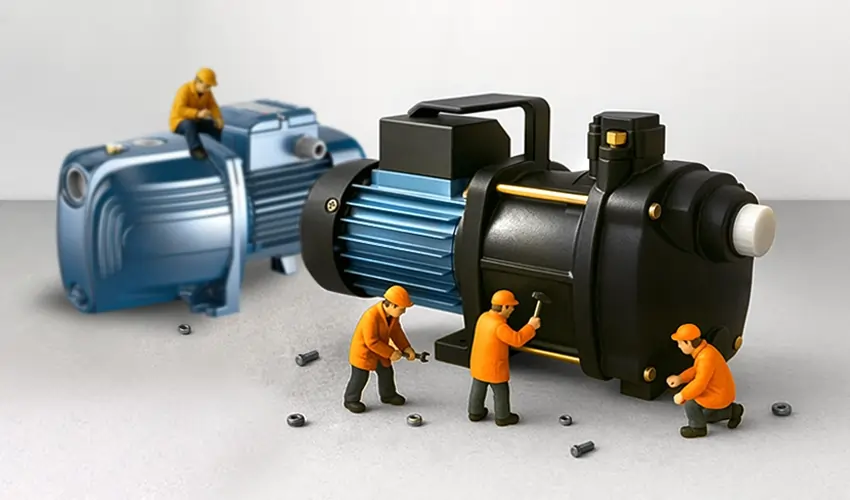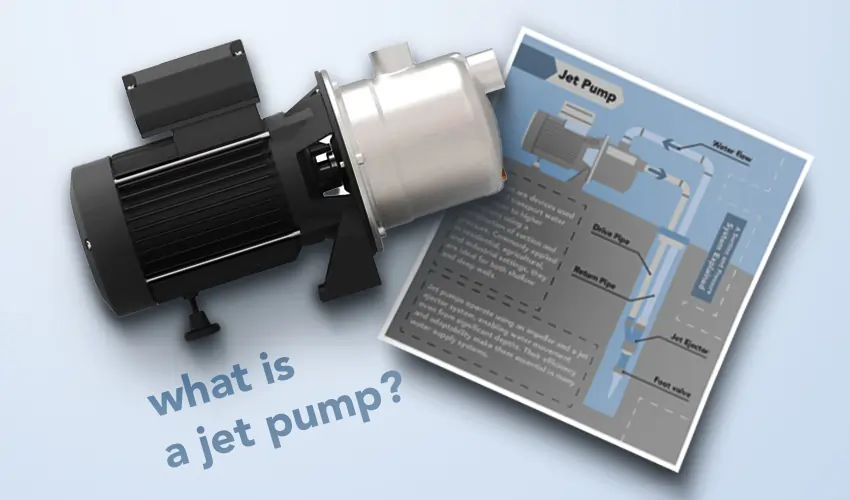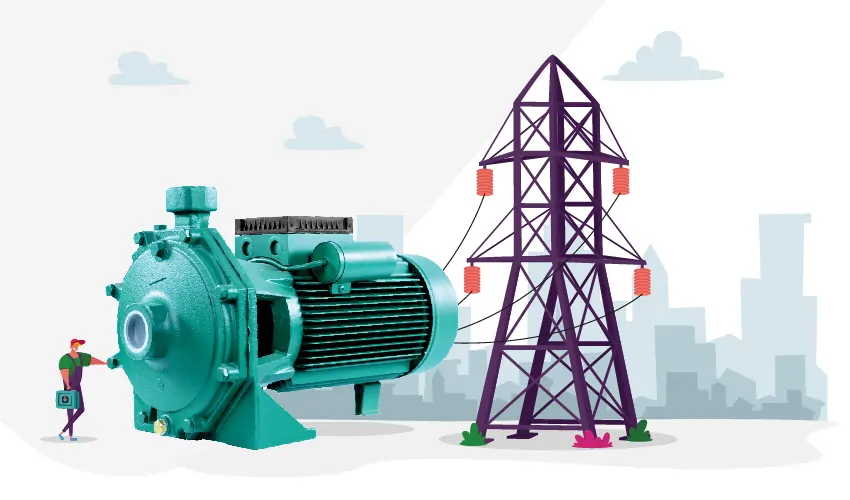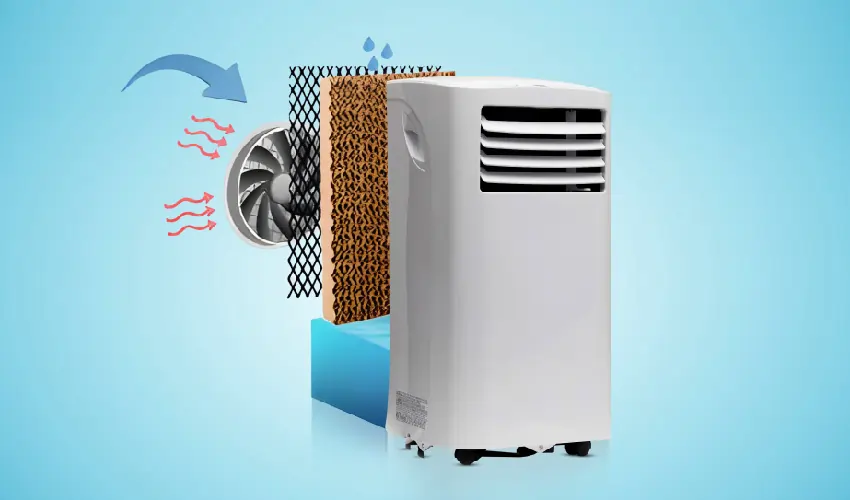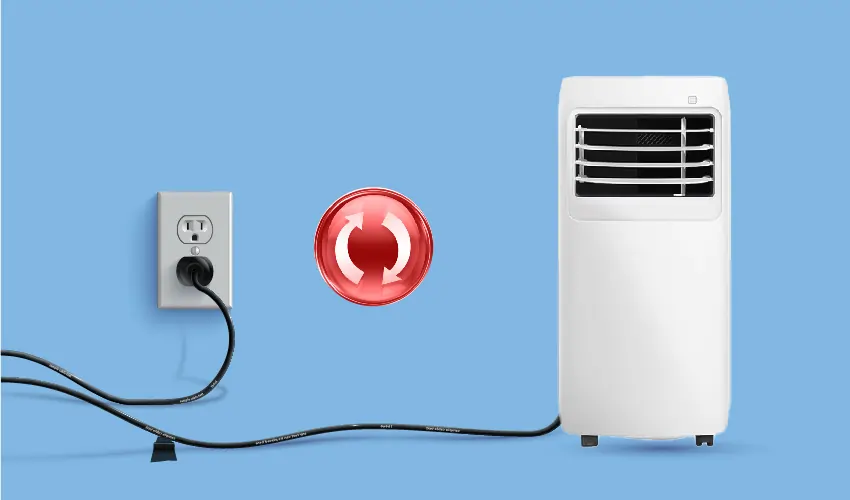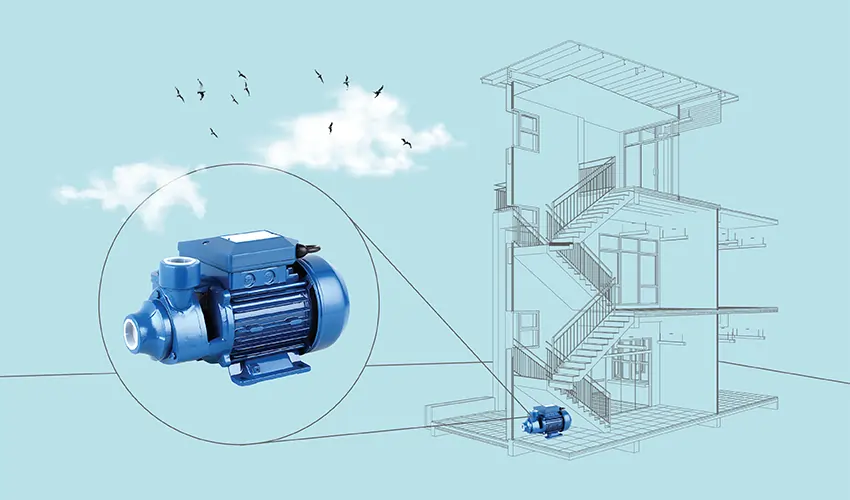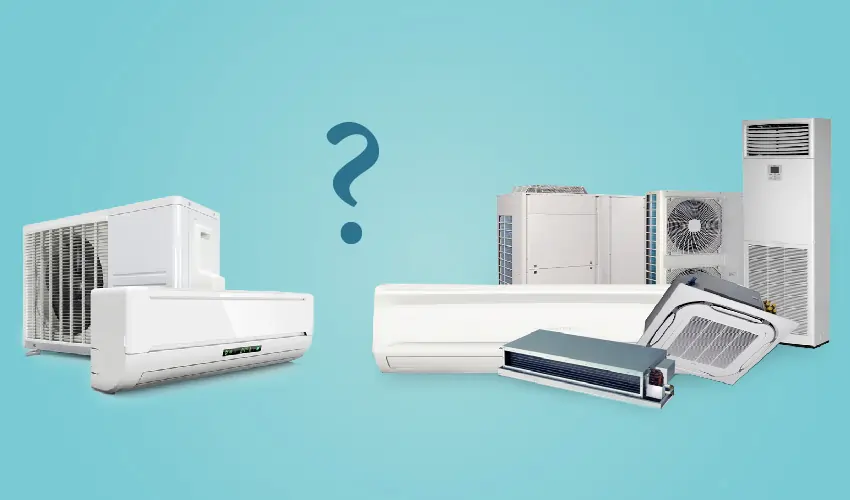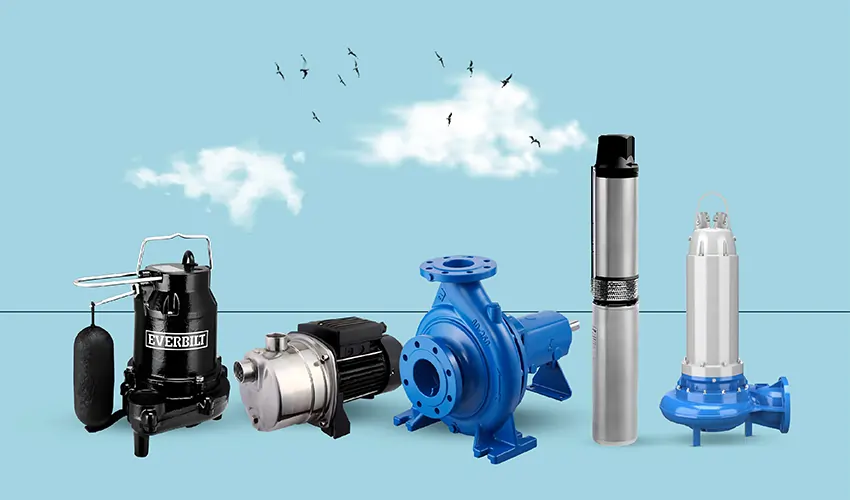What is split air conditioner?
A split air conditioner is a highly efficient cooling system comprised of two main units: an indoor evaporator unit and an outdoor condenser unit.
What is split air conditioner system?
A split air conditioner system is a type of air conditioning system commonly used in residential and commercial buildings. It consists of two main components: an indoor unit and an outdoor unit.
Benefits of a split air conditioner
Split air conditioners offer several benefits compared to other types of air conditioning systems, including:
- Energy efficiency: Split systems are known for their energy efficiency, which can lead to lower energy bills compared to other types of air conditioners. They often come with features like inverter technology, which adjusts the compressor speed according to the cooling needs, resulting in less energy consumption.
- Quiet operation: The compressor and condenser unit of a split system are located outside the building, which means the indoor unit operates quietly, creating a more comfortable and peaceful environment inside.
- Flexibility in installation: Split air conditioners offer flexibility in installation since the indoor unit can be mounted on walls or ceilings. This allows for space-saving options and doesn’t require any window space, unlike window units. Additionally, multiple indoor units can be connected to a single outdoor unit, providing zoned cooling for different areas of a building.
- Improved air quality: Split systems typically come with advanced air filtration systems that can remove dust, allergens, and other airborne particles from the indoor air, leading to improved indoor air quality and a healthier environment.
- Precise temperature control: Split air conditioners offer precise temperature control, allowing users to set and maintain their desired temperature levels accurately. This can contribute to greater comfort and satisfaction for occupants.
- Aesthetic appeal: The indoor unit of a split air conditioner is sleek and compact, blending well with modern interior designs. It doesn’t obstruct views from windows and doesn’t require any significant modifications to the building’s structure during installation.
- Reduced maintenance: Split systems generally require less maintenance compared to other types of air conditioners. The outdoor unit is typically easier to access for maintenance tasks like cleaning or servicing.
Different Types of Split Air Conditioners
There are several different types of split air conditioners available, each designed to suit specific needs and preferences. Some common types include:
1. Single-Zone Split Systems: These systems consist of one outdoor unit connected to one indoor unit. They are ideal for cooling individual rooms or zones within a building and are relatively simple to install.
2. Multi-Zone Split Systems: Multi-zone systems consist of one outdoor unit connected to multiple indoor units, each serving a different room or zone within the building. They offer greater flexibility and zoning capabilities compared to single-zone systems, allowing for independent temperature control in each area.
3. Ductless Mini-Split Systems: Ductless mini-split systems operate similarly to traditional split systems but do not require ductwork for air distribution. They consist of an outdoor unit connected to one or more indoor units via refrigerant lines. These systems are suitable for buildings without existing ductwork or where duct installation is impractical.
4. Ducted Split Systems: Ducted split systems incorporate ductwork to distribute cooled air throughout the building. They consist of a central outdoor unit connected to a network of ducts that deliver air to various rooms or zones. Ducted systems are often used in larger buildings or homes where centralized air distribution is desired.
5. Ceiling Cassette Split Systems: Ceiling cassette split systems feature indoor units that are mounted in the ceiling, providing discreet cooling without occupying wall space. These systems are suitable for applications where floor and wall space is limited.
6. Floor-Mounted Split Systems: Floor-mounted split systems have indoor units that are installed near the floor, making them ideal for spaces with low ceilings or where wall mounting is not feasible.
7. High-Wall Split Systems: High-wall split systems are the most common type of split air conditioners. They feature indoor units that are mounted high on a wall, providing efficient cooling and airflow throughout the room.
What is single split air conditioner?
A single split air conditioner, often referred to simply as a “split air conditioner,” is a type of air conditioning system that consists of two main components: an indoor unit and an outdoor unit. This system is designed to cool a single room or area within a building.
Here’s how a single split air conditioner typically works:
- Indoor Unit: This component is installed inside the room or area that needs to be cooled. It contains the evaporator coil, fan, and air filter. The indoor unit absorbs heat from the indoor air and cools it down before circulating the cooled air back into the room.
- Outdoor Unit: The outdoor unit is installed outside the building and contains the compressor, condenser coil, and expansion valve. Its primary function is to release the heat absorbed from the indoor air to the outdoor environment. The compressor in the outdoor unit compresses the refrigerant, increasing its temperature and pressure. Then, the hot refrigerant travels to the condenser coil, where it releases heat to the outdoor air and condenses back into a liquid form.
The indoor and outdoor units are connected by refrigerant lines, which circulate refrigerant between the two units. These lines also contain a conduit for power and control wiring.
What is multi split air conditioner?
A multi-split air conditioner, also known as a multi-zone split system, is a type of air conditioning system that consists of multiple indoor units connected to a single outdoor unit. This configuration allows for independent temperature control in different rooms or zones within a building, providing greater flexibility and customization compared to single-split systems.
Here’s how a multi-split air conditioner typically works:
- Outdoor Unit: Like a single-split system, the outdoor unit contains components such as the compressor, condenser coil, and expansion valve. However, in a multi-split system, this outdoor unit is designed to support multiple indoor units. It has multiple refrigerant lines and connections to accommodate the various indoor units it serves.
- Indoor Units: Each indoor unit in a multi-split system is installed in a separate room or zone within the building. These indoor units can vary in type and configuration, such as wall-mounted, ceiling cassette, floor-mounted, or ducted units, depending on the specific requirements of each space. Each indoor unit has its own evaporator coil, fan, and air filter for cooling the air in its respective area.
- Refrigerant Lines: Refrigerant lines run from the outdoor unit to each indoor unit, carrying refrigerant between them. These lines also contain a conduit for power and control wiring. The refrigerant absorbs heat from the indoor air in each unit and carries it to the outdoor unit, where the heat is released to the outdoor environment.
Multi-split air conditioners offer several advantages over single-split systems, including:
- Zoned Cooling: The ability to independently control the temperature in different rooms or zones allows for personalized comfort and energy savings. Occupants can adjust the cooling level according to their preferences and usage patterns.
- Space Efficiency: With a single outdoor unit serving multiple indoor units, multi-split systems can be more space-efficient compared to installing separate single-split systems for each room or zone.
- Flexibility in Installation: Multi-split systems offer flexibility in installation, allowing for a variety of indoor unit configurations to suit different room layouts and aesthetics. This flexibility can be particularly useful in retrofitting existing buildings or spaces where ductwork is not feasible.
Are split air conditioners energy efficient?
Yes, split air conditioners are generally considered to be energy-efficient cooling options. There are several factors that contribute to their energy efficiency:
- Inverter Technology: Many split air conditioners utilize inverter technology in their compressors. Inverter compressors can adjust their speed based on the cooling needs of the space, leading to more efficient operation compared to traditional compressors that operate at fixed speeds. This allows the system to maintain a more consistent temperature and avoid energy-wasting cycling on and off.
- Variable Speed Fans: Indoor units in split air conditioners often feature variable speed fans, which can adjust their speed to match the cooling load. This helps optimize airflow and reduce energy consumption, especially during periods of lower cooling demand.
- SEER Rating: Split air conditioners are rated for efficiency using the Seasonal Energy Efficiency Ratio (SEER). Higher SEER ratings indicate greater energy efficiency. Many modern split systems boast high SEER ratings, which means they can provide effective cooling while consuming less energy.
- Zoning Capability: Multi-zone split systems allow for zoning, meaning different rooms or zones can be cooled independently. This zoning capability can help save energy by only cooling occupied areas, rather than the entire building.
- Advanced Features: Some split air conditioners come with advanced features such as programmable thermostats, energy-saving modes, and timer functions, which help optimize energy usage and reduce waste.
- Proper Sizing and Installation: Ensuring that a split air conditioner is properly sized for the space it will cool and installed correctly by a qualified professional is crucial for maximizing energy efficiency. An oversized or improperly installed system may cycle on and off more frequently, leading to higher energy consumption and reduced efficiency.
How quiet are split air conditioners
Split air conditioners are generally known for their quiet operation, particularly compared to other types of air conditioning systems like window units or portable air conditioners. There are several reasons why split air conditioners tend to be quieter:
- Outdoor Condenser: In split systems, the noisy components such as the compressor and condenser fan are located in the outdoor unit. This means that the majority of the noise-generating components are situated outside the building, reducing indoor noise levels.
- Indoor Unit Design: Indoor units of split air conditioners are typically designed with noise reduction in mind. They often feature insulated cabinets and vibration-absorbing materials to minimize operational noise. Additionally, many modern indoor units come with variable-speed fans that can operate at lower speeds, further reducing noise levels.
- Remote Compressor: Some split systems utilize a remote compressor, where the compressor is located away from the indoor unit. This design helps reduce noise levels inside the building by keeping the noise-generating components even further away from occupied spaces.
- Fan Speed Control: Split air conditioners often have multiple fan speed settings, allowing users to adjust the airflow to their preferences. Lower fan speeds can result in quieter operation, particularly when cooling demands are lower.
- Sound Ratings: Manufacturers often provide sound ratings for their air conditioning units, measured in decibels (dB). Lower dB ratings indicate quieter operation. Many split air conditioners are designed to operate at relatively low sound levels, typically ranging from around 20 dB to 60 dB or lower, depending on factors such as the unit’s size, capacity, and fan speed.
Conclusion
In conclusion, a split air conditioner is a type of cooling system that consists of two main components: an indoor unit and an outdoor unit. The indoor unit is responsible for absorbing heat from indoor air, while the outdoor unit releases this heat to the outdoor environment. Split air conditioners are known for their energy efficiency, quiet operation, and flexibility in installation, making them popular choices for both residential and commercial cooling applications.






